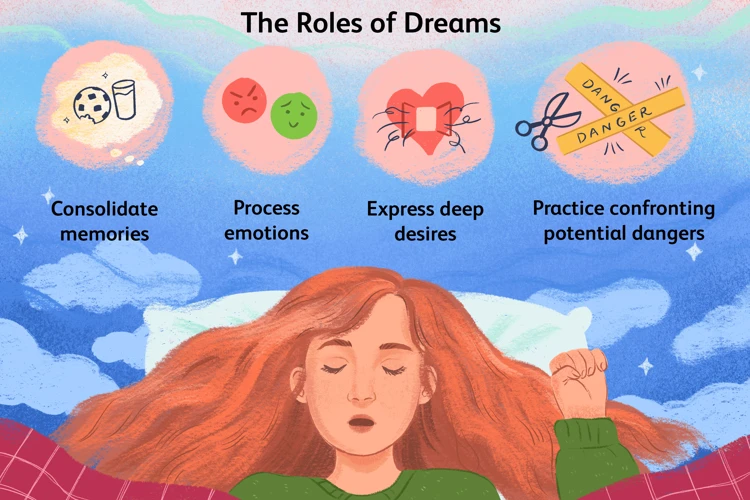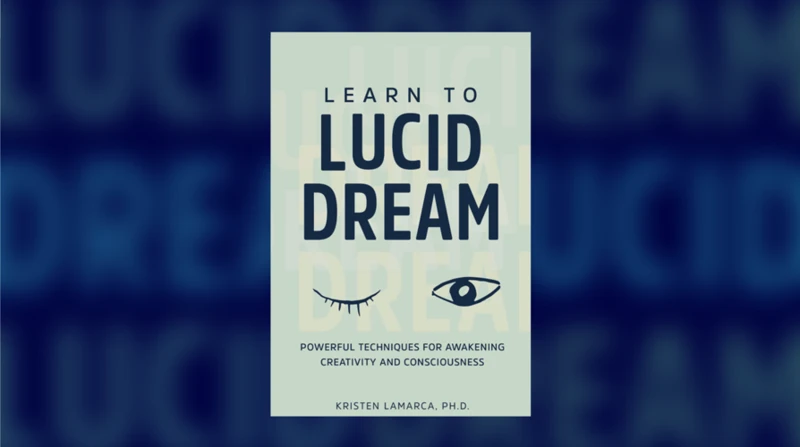Have you ever wished you could navigate your dreams with complete awareness and control? Enter the world of lucid dreaming, a fascinating phenomenon that allows individuals to become conscious within their dreams. But did you know that lucid dreaming has a powerful impact on our emotional well-being? In this comprehensive article, we will delve into the role of lucid dreaming in managing emotions. From understanding what lucid dreaming is to exploring the connection between emotions and dreams, we will uncover the various benefits of lucid dreaming for emotional management. Additionally, we will provide practical techniques for harnessing the power of lucid dreaming to heal and regulate our emotions effectively. Whether you are a seasoned lucid dreamer or someone new to the concept, this article will equip you with valuable insights and real-life applications to enhance your emotional well-being. Get ready to embark on an extraordinary journey through the realm of lucid dreams and discover the profound impact it can have on managing your emotions.
What is Lucid Dreaming?

Lucid dreaming is a unique state of consciousness where a person becomes fully aware that they are dreaming while the dream is still occurring. In other words, it is the ability to recognize and have conscious control over the dream world. This state allows dreamers to actively participate in and manipulate their dreams, blurring the line between the waking world and the fantastical realm of dreams. When one is experiencing a lucid dream, they can make decisions, exert control over their dream environment, and even influence the direction of the dream narrative. It is like being the writer, director, and actor of your own dream movie. This extraordinary phenomenon offers a playground for exploration and self-discovery, where the rules of reality can be bent or rewritten. Lucid dreaming can occur spontaneously, but it can also be developed through various techniques and practices, such as reality checks and dream journaling. By honing the skill of lucid dreaming, individuals can tap into the depths of their subconscious mind and unlock a world of infinite possibilities. To better understand the implications of lucid dreaming, it is essential to explore the connection between emotions and dreams, which will be discussed in the following section.
The Connection Between Emotions and Dreams

The connection between emotions and dreams is a fascinating and complex topic. Dreams often serve as a reflection of our emotional state and can provide valuable insights into our subconscious mind. During sleep, the brain processes and consolidates our experiences, memories, and emotions from the day. This emotional information can manifest in various ways within our dreams, ranging from subtle cues to vivid and intense emotional experiences. Dreams have the power to amplify and exaggerate our emotions, allowing us to experience them in a heightened and sometimes symbolic way. For example, if we are feeling anxious or stressed in our waking life, we may have dreams that reflect those feelings, such as being chased or facing obstacles. On the other hand, positive emotions can also be present in dreams, offering moments of joy, love, and creativity. By paying attention to the emotions present in our dreams, we can gain valuable insight into our emotional well-being and gain a deeper understanding of ourselves. Interpretating dream symbols and exploring the emotional themes within dreams can provide a gateway to self-discovery and personal growth. Dream journaling is a powerful technique that can be used to document and analyze the connections between emotions and dreams. By keeping a dream journal, individuals can identify recurring patterns, symbols, and emotions within their dreams, which can then be used for further exploration and introspection. Understanding the science behind dream emotions further supports the significance of emotions in dreams and their impact on our waking lives. Whether we are experiencing joy, fear, sadness, or other emotions, dreams offer a unique window into our inner world and provide an opportunity for emotional exploration and healing.
The Benefits of Lucid Dreaming for Emotional Management

Lucid dreaming offers an array of benefits when it comes to managing our emotions. Firstly, lucid dreaming provides a safe and controlled space for emotion regulation in the dream world. Dreamers can consciously confront and process their emotions, allowing for a cathartic release that can contribute to emotional healing. Lucid dreaming can aid in overcoming traumas and stress by providing an opportunity to reframe and reinterpret past experiences within the dream narrative. This process can lead to a reduction in the emotional intensity associated with traumatic events. Additionally, lucid dreaming enhances self-awareness and emotional intelligence by allowing individuals to explore and understand their emotions on a deeper level. Through lucid dreams, we can tap into our subconscious mind, gaining insights into unresolved emotional issues and facilitating personal growth. The benefits of lucid dreaming for emotional management are truly transformative, offering a unique and empowering approach to understanding and nurturing our emotional well-being. To learn specific lucid dreaming techniques for emotional healing, refer to our next section on Lucid Dreaming Techniques for Emotional Healing, which explores practices such as reality checks, dream journaling, and seeking emotional guidance from dream characters.
1. Emotion Regulation in the Dream World
Emotions play a significant role in our everyday lives, and they also have a profound influence on our dreams. When we become aware and lucid in our dreams, we gain the unique ability to directly regulate and manipulate our emotions within the dream world. This means that we can consciously choose to change the emotional tone of a dream or even confront and work through unresolved emotional issues. For example, if we find ourselves experiencing fear in a dream, we can actively choose to transform that fear into a sense of empowerment or curiosity. By consciously altering our emotional experiences in the dream state, we can gain a greater sense of emotional control and well-being.
Lucid dreaming offers a safe and controlled environment for exploring and processing emotions that may be difficult to confront in waking life. Dreams have the ability to bring forth deeply rooted emotions and memories, allowing us to engage with them in a symbolic and metaphorical way. This can provide valuable insights and allow for cathartic emotional release. For instance, if we have experienced a traumatic event, lucid dreaming can provide an opportunity to confront and process these emotions in a controlled setting, potentially aiding in the healing process.
Another fascinating aspect of emotion regulation in lucid dreams is the ability to practice emotional responses and scenarios. Dreamers can deliberately put themselves in situations that elicit specific emotions, such as confidence or compassion. By repeatedly experiencing and rehearsing these emotional states within the dream world, individuals may find it easier to embody and express these emotions in their waking lives. Lucid dreams, therefore, serve as a training ground for emotional intelligence and can have a positive impact on how we navigate and manage our emotions in the real world.
It is important to note that the interpretation of dream symbols and emotions can vary for each individual. While some symbols may hold universal meanings, such as water representing emotions or flying symbolizing freedom, personal experiences and cultural backgrounds can influence the significance of these symbols. It can be helpful to keep a dream journal to track recurring themes and emotions in order to gain a deeper understanding of their personal significance. Dream journaling can facilitate emotional self-discovery and provide valuable insights into the connections between our dreams and waking emotions.
In the next section, we will delve into the benefits of lucid dreaming in overcoming traumas and stress, shedding light on how this practice can aid in emotional healing.
2. Overcoming Traumas and Stress
Overcoming traumas and stress is another significant benefit of lucid dreaming. Traumatic experiences can often leave deep emotional scars that continue to affect individuals long after the event has occurred. However, in the realm of lucid dreaming, these traumas can be confronted, processed, and ultimately resolved. During lucid dreams, individuals have the opportunity to revisit past traumatic events in a safe and controlled environment. By consciously engaging with these experiences, individuals can gain a sense of empowerment and control over their emotions related to the trauma. Lucid dreams provide a space for individuals to experiment with different scenarios and outcomes, allowing them to rehearse healing and recovery. This process can lead to emotional catharsis and a reduction in anxiety and stress associated with the traumatic event. Lucid dreaming can also help to alleviate general stress and anxiety by providing a refuge from the pressures of the waking world. The dream world becomes a sanctuary where individuals can escape from the demands of everyday life and find solace and relaxation. By consciously directing their dreams, individuals can create soothing and calming environments that have a positive impact on their emotional well-being. Whether it’s facing and resolving past traumas or seeking respite from daily stressors, lucid dreaming offers a powerful tool for emotional healing and resilience. To further explore the techniques and practices for utilizing lucid dreams in emotional management, refer to the section on emotional visualization in lucid dreams, where we delve into the power of visualizing and transforming emotions within the dream world.
3. Enhancing Self-Awareness and Emotional Intelligence
Enhancing self-awareness and emotional intelligence is another valuable benefit of lucid dreaming. When we become conscious within our dreams, we gain a unique opportunity to observe and explore the intricacies of our emotions in a safe and controlled environment. Lucid dreaming allows us to directly experience and examine our emotional responses, providing valuable insights into our subconscious mind. By consciously engaging with our emotions during lucid dreams, we can develop a deeper understanding of their origins and patterns, ultimately leading to enhanced self-awareness. This increased self-awareness extends beyond the realm of dreams and permeates into our waking lives, enabling us to recognize and navigate our emotions with greater clarity and understanding. Additionally, lucid dreaming can also serve as a platform for practicing emotional regulation strategies. For example, a lucid dreamer can intentionally induce positive emotions, such as joy or gratitude, to counteract negative emotions experienced during the dream. This practice can transfer into real-life situations, empowering individuals to regulate their emotions more effectively. Ultimately, lucid dreaming acts as a bridge between the conscious and subconscious mind, offering a unique avenue for personal growth and emotional intelligence development. To maximize the benefits of lucid dreaming for enhancing self-awareness and emotional intelligence, techniques such as dream journaling and emotional self-discovery can be invaluable tools. You can learn more about the importance of dream journaling in emotional self-discovery by exploring our guide on using dream journaling for emotional self-discovery.
Lucid Dreaming Techniques for Emotional Healing

When it comes to harnessing the power of lucid dreaming for emotional healing, there are various techniques that can be employed. One effective technique is the practice of reality checks and dream journaling. Reality checks involve regularly questioning whether one is dreaming or awake throughout the day, which can help carry the habit into the dream world. By performing these reality checks and recording details of dreams in a dream journal, dreamers can improve their dream recall and enhance self-awareness. Another technique is emotional visualization in lucid dreams, where individuals intentionally evoke specific emotions within the dream state to process and release emotional burdens. Additionally, seeking emotional guidance from dream characters can provide valuable insights and perspectives on managing emotions in waking life. By engaging with dream characters and exploring the symbolism within dreams, individuals can unravel the deep-rooted emotions and gain a better understanding of their emotional landscape. These lucid dreaming techniques offer powerful tools for emotional healing and self-discovery, enabling individuals to tap into the therapeutic potential of their dreams. To further explore the significance of dream symbolism in emotional healing, you can refer to the article “/interpreting-dream-symbols-emotions/“.
1. Reality Checks and Dream Journaling
Reality checks and dream journaling are two fundamental techniques that can help individuals cultivate lucid dreaming and utilize it for emotional healing and management.
Reality checks: Reality checks are simple actions or observations that you can perform throughout your waking hours to determine whether you are in a dream or in reality. By incorporating regular reality checks into your daily routine, you are training your mind to question the nature of your surroundings. Some common reality checks include looking at your hands, trying to push your finger through the palm of your opposite hand, or jumping to see if you float. These checks serve as cues that prompt you to question your reality even in your dreams. With consistent practice, this habit is bound to carry over into your dream state, increasing the likelihood of becoming lucid. Remember to perform reality checks with a true sense of curiosity and open-mindedness. Over time, your brain will start to question reality in your dreams, leading to consciousness within the dream world.
Dream journaling: A dream journal is a valuable tool for capturing and reflecting on the content of your dreams. Keeping a journal allows you to record your dreams immediately after waking up when the details are still fresh in your mind. By jotting down these details, you reinforce your dream recall abilities. This practice helps you become more attuned to your dreams and enhances self-awareness, which is vital for lucid dreaming and emotional management. Additionally, documenting your dreams provides a rich source of material to analyze patterns, symbols, and emotions that frequently appear in your dreams. This analysis can lead to profound insights into your subconscious mind and emotional well-being. Consider using keywords or tags in your dream journal to categorize different emotions or themes that arise in your dreams. This way, you can easily reference and explore specific emotions or symbols in your dreams, facilitating a deeper understanding of your inner world. Dream journaling can also assist in interpreting dream symbols and uncovering the underlying emotions associated with your dreams. For more information on interpreting dream symbols and emotions, refer to this link. The combination of reality checks and dream journaling creates a powerful synergy, increasing your chances of becoming lucid in dreams and enabling you to explore and manage your emotions within the dream world.
By incorporating reality checks and dream journaling into your daily practice, you are equipping yourself with essential techniques for cultivating lucid dreaming and using it as a tool for emotional healing and self-discovery. In the next section, we will delve further into the process of emotional visualization in lucid dreams and its significance in managing emotions.
2. Emotional Visualization in Lucid Dreams
Emotional visualization in lucid dreams holds tremendous potential for managing and transforming our emotions. When we are aware and in control of our dreams, we can intentionally create vivid and immersive emotional experiences within the dream world. This technique involves deliberately conjuring emotions and scenarios that elicit specific emotional responses while in a lucid dream state. By visualizing and experiencing these emotions, we can gain a deeper understanding of our emotional landscape and work through unresolved feelings or traumas. For example, if someone is struggling with fear or anxiety, they can use lucid dreaming as a platform to confront and gradually overcome these emotions in a safe and controlled environment. Through repeated emotional visualization exercises, individuals can desensitize themselves to certain emotional triggers and build emotional resilience in their waking lives. Research has shown that vivid emotional experiences in dreams can have a significant impact on emotions in waking life, further emphasizing the potential therapeutic benefits of emotional visualization in lucid dreams. For more insights into the science behind dream emotions, you can refer to /the-science-of-dream-emotions/. By harnessing the power of emotional visualization in lucid dreams, we can tap into our subconscious mind and initiate powerful shifts in our emotional well-being.
3. Seeking Emotional Guidance from Dream Characters
Seeking emotional guidance from dream characters is a fascinating aspect of lucid dreaming that can greatly contribute to emotional healing and growth. In the world of lucid dreaming, dream characters represent different aspects of ourselves, archetypes, or even the subconscious projection of people we know in real life. By engaging with these dream characters and seeking their guidance, we can gain valuable insights into our emotions and inner conflicts. When confronted with a challenging emotional situation in a lucid dream, one can directly interact with dream characters and ask for their wisdom or advice. These characters may provide unique perspectives, offer solutions to emotional dilemmas, or even embody the desired emotions we strive to cultivate. Through conversing with dream characters, we can gain a deeper understanding of our hidden desires, fears, and unresolved emotional issues. This interaction allows us to access our own subconscious knowledge and intuition, leading to personal growth and emotional transformation. It is important to approach dream characters with curiosity, openness, and a willingness to listen to their guidance. However, it is crucial to remember that dream characters are creations of our own mind, and their responses reflect our own thoughts and beliefs. Seeking emotional guidance from dream characters can provide a powerful opportunity for self-reflection and emotional healing, allowing us to gain a deeper understanding of ourselves and our emotional landscape. By exploring this aspect of lucid dreaming, we can harness the therapeutic potential of our dreams and further enhance our emotional well-being and self-awareness.
Real-Life Applications and Case Studies

Real-Life Applications and Case Studies
Lucid dreaming has practical applications that extend beyond the realm of dreams. By harnessing the power of lucid dreaming, individuals can gain valuable insights and apply them to their waking lives. For example, lucid dreaming can be used as a tool for creative problem-solving. When faced with a challenging situation, one can use lucid dreaming to explore different perspectives, experiment with potential solutions, and gain a fresh outlook. Additionally, lucid dreaming can be utilized as a platform for skill development. Research has shown that practicing physical skills or mentally rehearsing tasks in a lucid dream can enhance performance in real-life scenarios. This technique has been employed by athletes, musicians, and performers looking to improve their skills and overcome performance anxiety. Another significant aspect of lucid dreaming is its therapeutic potential. Case studies have shown that lucid dreaming can aid in overcoming phobias, managing anxiety disorders, and even processing traumatic experiences. By entering a lucid dream state, individuals can confront their fears in a controlled environment and gradually desensitize themselves to the associated emotions. Lucid dreaming can provide a safe space for emotional healing and exploring unresolved issues. It allows individuals to engage in therapeutic dialogue with dream characters or symbolically visualize emotions, facilitating a deeper understanding of oneself. The applications and benefits of lucid dreaming extend far beyond what can be described in this article, and case studies continue to shed light on its potential for personal growth, emotional well-being, and even spiritual exploration.
Practical Tips for Lucid Dreamers
To enhance your lucid dreaming practice and make the most of this powerful tool for emotional management, there are some practical tips you can follow. Firstly, prioritize sleep and dream recall by ensuring you get enough rest and maintaining a consistent sleep schedule. This will optimize your chances of experiencing and remembering your dreams. Secondly, make a regular lucid dreaming practice a priority by incorporating techniques such as reality checks and dream journaling into your daily routine. Reality checks involve questioning your waking reality throughout the day, which increases the likelihood of questioning your dream reality as well. Keeping a dream journal helps in recording and analyzing your dreams, providing valuable insights into your emotional landscape. Lastly, it is crucial to build emotional resilience in your waking life by practicing mindfulness, self-care, and emotional regulation techniques. This will not only improve your overall well-being but also have a positive impact on your lucid dreaming experiences. By implementing these practical tips, you can enhance your lucid dreaming abilities and harness the potential for emotional healing and self-discovery within the dream world.
1. Prioritizing Sleep and Dream Recall
Prioritizing sleep and dream recall is crucial for nurturing a successful lucid dreaming practice and harnessing its emotional benefits. Adequate sleep provides a foundation for optimal cognitive function and dream formation. When we prioritize sleep, we create an environment that promotes the occurrence of vivid dreams and increases the likelihood of lucidity. Establishing a consistent sleep routine and ensuring we get enough quality sleep sets the stage for more frequent and memorable dreams.
Dream recall is the ability to remember the content of our dreams upon waking up. This skill is essential for lucid dreaming, as it allows us to reflect on and analyze our dream experiences. To enhance dream recall, it is recommended to keep a dream journal next to your bed. Upon waking up, take a few moments to reflect on your dreams and write down as many details as possible. This practice not only strengthens your dream recall ability but also encourages self-reflection and emotional exploration.
Dream journaling serves as a powerful tool for diving deep into the realm of emotions within dreams. As you consistently record your dreams, you may start noticing recurring themes, symbols, or emotions that emerge. This insight can provide valuable information about your emotional state and subconscious desires. By examining the emotions present in your dreams, you can gain a greater understanding of your own emotional landscape and potentially identify areas that need attention or healing.
To improve sleep and dream recall, it is important to create a calming sleep environment, practice good sleep hygiene, and prioritize relaxation before bedtime. This may include implementing a bedtime routine, avoiding stimulating activities or electronic devices before sleep, and creating a comfortable sleeping environment. By prioritizing sleep and dream recall, you lay a solid foundation for a successful lucid dreaming practice and open up possibilities for exploring and managing your emotions through your dreams.
2. Maintaining a Regular Lucid Dreaming Practice
Maintaining a regular lucid dreaming practice is crucial for those who wish to harness the full potential of this extraordinary phenomenon. Here are some practical tips to help you establish and maintain a consistent lucid dreaming routine:
1. Set a Dream Recall Routine: To increase your chances of having lucid dreams, it is essential to improve your dream recall. Make it a habit to immediately record your dreams in a dream journal upon waking up. This practice strengthens your dream memory and builds a stronger connection with your dream world. By consistently documenting your dreams, you not only enhance your ability to remember them, but you also increase your awareness of dream patterns and potential dream signs.
2. Implement Reality Checks: Reality checks are techniques that help you verify whether you are in the waking world or in a dream. By performing reality checks throughout your day, you train your brain to question reality, increasing your chances of recognizing when you are dreaming. Common reality checks include trying to push your finger through your palm or looking at text or a clock and then looking away and looking back to see if it has changed. By incorporating regular reality checks into your daily routine, you condition your mind to question the nature of your reality both when you are awake and when you are dreaming.
3. Practice Meditation and Visualizations: Regular meditation practices can enhance your ability to focus, be present, and cultivate a calm and clear mind. This can be immensely beneficial for lucid dreaming as it improves your self-awareness and supports maintaining a stable lucid dream state. Additionally, incorporating visualizations during your waking hours can help you visualize your intentions and desired dream scenarios. By consistently practicing these techniques, you create a powerful mindset and set the stage for vivid and lucid dreaming experiences.
4. Experiment with Lucid Dreaming Techniques: There are various techniques that can increase your chances of having lucid dreams, such as Wake Induced Lucid Dreaming (WILD), Mnemonic Induction of Lucid Dreams (MILD), and the Wake-Back-to-Bed (WBTB) method. These techniques involve specific actions such as waking up in the middle of the night, setting intentions before falling asleep, or practicing conscious relaxation techniques. Experiment with different techniques to discover which ones work best for you and incorporate them into your regular lucid dreaming practice.
Maintaining a regular lucid dreaming practice takes time, patience, and dedication. Consistency is key, so make sure to prioritize your sleep, set aside time for daily practices, and remain persistent even if you initially encounter challenges. With time and practice, you will be able to dive deeper into the world of lucid dreaming and unlock its profound benefits for emotional management and self-discovery.
3. Building Emotional Resilience in Waking Life
Building emotional resilience in waking life is a crucial aspect of managing emotions and enhancing our overall well-being. While lucid dreaming can be a powerful tool for emotional healing and regulation, it is equally important to focus on strengthening our emotional resilience in our waking hours. Here are three practical tips for building emotional resilience in your day-to-day life:
1. Practice self-care: Taking care of your physical, mental, and emotional well-being is essential for building emotional resilience. Make self-care a priority by engaging in activities that bring you joy and relaxation. This could include practicing mindfulness, exercising regularly, spending time in nature, or engaging in hobbies that fulfill you.
2. Seek support: Building emotional resilience involves recognizing when you need support and reaching out to others. Cultivate and maintain healthy relationships with friends, family, or support groups who can provide a listening ear, guidance, and emotional support when needed. Having a strong support system can help you navigate difficult emotions and situations more effectively.
3. Practice emotional regulation techniques: Learn and employ techniques that can help you regulate and manage your emotions in healthy ways. This could include deep breathing exercises, meditation, journaling, or engaging in creative outlets such as art or music. Developing emotional regulation skills can empower you to respond to challenging emotions with greater resilience and adaptability.
By implementing these strategies into your waking life, you are building a solid foundation of emotional resilience that can complement and enhance the benefits gained from lucid dreaming. Remember that emotional resilience is a lifelong journey, and it requires consistent effort and practice. Embrace the process and be gentle with yourself as you continue to develop your emotional well-being both in and out of the dream world.
Conclusion
To conclude, lucid dreaming holds significant potential when it comes to managing emotions. By allowing individuals to actively engage with their dreams, lucid dreaming offers a unique platform for emotion regulation, trauma healing, and enhancing self-awareness and emotional intelligence. Through various techniques like reality checks, dream journaling, emotional visualization, and seeking guidance from dream characters, individuals can harness the power of lucid dreaming to navigate their emotions more effectively. Real-life applications and case studies have demonstrated the positive impact of lucid dreaming on emotional well-being. However, it is important to emphasize the need for consistent practice, prioritizing sleep, and building emotional resilience in waking life to fully take advantage of lucid dreaming as a tool for emotional management. As we continue to explore the depths of the human mind and the potential of lucid dreaming, the role it plays in managing emotions becomes even more evident. So, embrace the realm of lucid dreaming and discover the transformative power it holds for your emotional well-being.
Frequently Asked Questions
1. Can anyone learn to lucid dream?
Yes, anyone has the potential to learn how to lucid dream. While some individuals may naturally experience lucid dreams, most people can develop this skill through various techniques and practices.
2. Are lucid dreams the same as vivid dreams?
No, lucid dreams and vivid dreams are not the same. Vivid dreams refer to dreams that are exceptionally clear, vivid, and detailed, while lucid dreams specifically involve the awareness that one is dreaming during the dream.
3. Is lucid dreaming dangerous?
No, lucid dreaming is generally considered safe and non-harmful. It is a natural state of consciousness that occurs during sleep. However, individuals with certain mental health conditions should consult with a healthcare professional before actively engaging in lucid dreaming practices.
4. Can lucid dreaming be used to overcome nightmares?
Yes, lucid dreaming can be a valuable tool for overcoming nightmares. When one becomes aware that they are dreaming within a nightmare, they can actively change the dream’s narrative, confront the source of fear, and transform the dream into a more positive experience.
5. How can lucid dreaming help with creativity?
Lucid dreaming can enhance creativity by providing a platform for exploring limitless possibilities and imaginative scenarios. Artists, writers, and creators often use lucid dreams as a source of inspiration and to engage in vivid, immersive experiences.
6. Can lucid dreaming improve problem-solving skills?
Yes, lucid dreaming can potentially improve problem-solving skills. By having control over the dream environment, individuals can actively seek solutions and experiment with different approaches to real-life challenges.
7. Is lucid dreaming a form of meditation?
While lucid dreaming and meditation share some similarities, they are distinct practices. Lucid dreaming involves conscious participation in dreams, while meditation focuses on achieving a state of present-moment awareness and inner stillness.
8. Can lucid dreaming be used for personal growth?
Absolutely. Lucid dreaming can be a powerful tool for personal growth and self-exploration. It allows individuals to delve into their subconscious mind, confront fears, gain insights, and develop a deeper understanding of themselves.
9. Can lucid dreaming have physical benefits?
While the primary benefits of lucid dreaming are psychological and emotional, some individuals report experiencing physical sensations, such as relaxation, healing, and relief from pain, within the lucid dream state.
10. Is there scientific research supporting the effectiveness of lucid dreaming?
Yes, there is increasing scientific interest in studying lucid dreaming. Research has shown associations between lucid dreaming and improvements in cognitive abilities, emotional well-being, and therapeutic applications. However, further research is still needed to fully understand the potential benefits and mechanisms of lucid dreaming.








